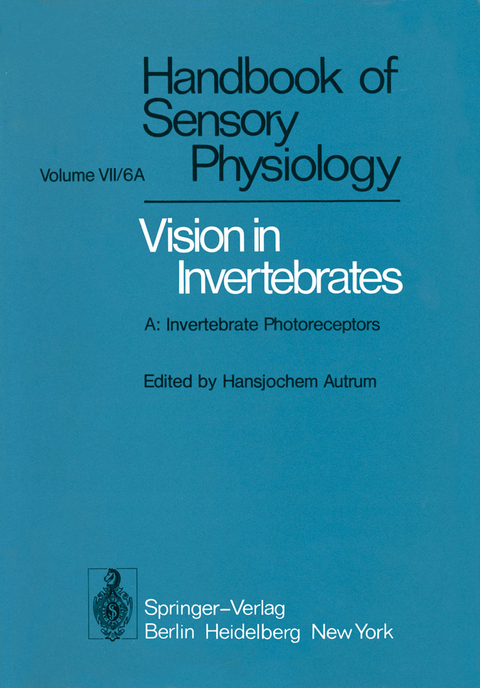
Comparative Physiology and Evolution of Vision in Invertebrates
A: Invertebrate Photoreceptors
Seiten
2011
|
1. Softcover reprint of the original 1st ed. 1979
Springer Berlin (Verlag)
978-3-642-67001-5 (ISBN)
Springer Berlin (Verlag)
978-3-642-67001-5 (ISBN)
In the comparative physiology of photoreception by the Protista and the invertebrates two aspects are emphasized: (1) the diversity of visual processes in these groups and (2) their bearing upon general mechanisms of photoreception. Invertebrates have evolved a far greater variety of adaptations than vertebrates modifications aiding survival in the remarkably different biotopes they occupy. The number of species in itself suggests this multiformity; each of them has peculiarities of its own, in morphology as well as in physiology and behavior. But these special adaptations are variations on a few great themes. Although the catalogue of invertebrate species is immense, the literature concerning them nearly rivals it in extent-even if one considers only that fraction dealing with visual physiology. Taxonomy proceeds by grouping the species, categorizing them in genera, families, orders, and progressively larger units. Similarly, comparative physiology aims at an analogous, more or less compre hensive, classification. This Part A of Volume VII/6, like Part B that follows it, emphasizes the broad questions that concern groups larger than the individual species; in some cases these questions have general applicability. The middle course between approaches that are too specialized and those that are too general is often elusive, but here we attempt to follow it. The vast number of special adaptations-probably, as we have said, as large as the number of species-is beyond the range even of a handbook.
1 Introduction.- 2 Photic Responses and Sensory Transduction in Protists.- 3 Intraocular Filters.- 4 The Physiology of Invertebrate Visual Pigments.- 5 The Physics of Vision in Compound Eyes.- 6 Receptor Potentials in Invertebrate Visual Cells.- 7 Pseudopupils of Compound Eyes.- 8 Apposition and Superposition Eyes.- 9 Spectral Sensitivity and Colour Vision in Invertebrates.- 10 Extraocular Photoreception.- 11 Extraocular Light Receptors and Circadian Rythms.- 12 Genetic Approach to a Visual System.- Author Index.
| Erscheint lt. Verlag | 12.11.2011 |
|---|---|
| Reihe/Serie | Autrum,H.(Eds):Hdbk Sens.Physiology Vol 7 | Handbook of Sensory Physiology |
| Zusatzinfo | XI, 729 p. |
| Verlagsort | Berlin |
| Sprache | englisch |
| Maße | 170 x 244 mm |
| Gewicht | 1272 g |
| Themenwelt | Medizin / Pharmazie ► Allgemeines / Lexika |
| Naturwissenschaften ► Biologie ► Evolution | |
| Naturwissenschaften ► Biologie ► Zoologie | |
| Schlagworte | Adaptation • Evolution • Invertebrates • Model invertebrates • Photorezeptor • Physiology |
| ISBN-10 | 3-642-67001-6 / 3642670016 |
| ISBN-13 | 978-3-642-67001-5 / 9783642670015 |
| Zustand | Neuware |
| Haben Sie eine Frage zum Produkt? |
Mehr entdecken
aus dem Bereich
aus dem Bereich
Komplette Neuübersetzung. Mit einem Nachwort von Josef H. Reichholf.
Buch | Hardcover (2018)
Klett-Cotta (Verlag)
48,00 €
Wie die Vernichtung der Arten unser Überleben bedroht - Der …
Buch | Softcover (2023)
Penguin (Verlag)
15,00 €


